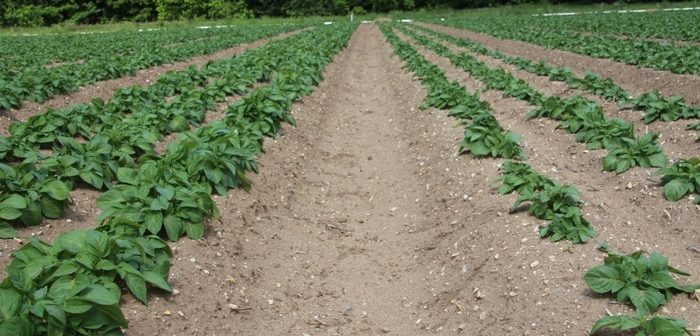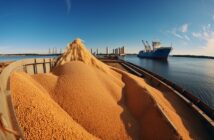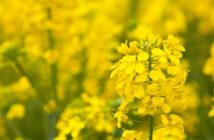BASF launched the first SDHI fungicide for in-furrow treatment for Rhizoctonia solani in potatoes two years ago. Based on Xemium (fluxapyroxad), ALLSTAR showed excellent efficacy in development trials to produce brighter, more marketable and more uniform potatoes with fewer skin blemishes. It is a very kind product to the potato resulting in a more even crop emergence.
Rhizoctonia solani is a pathogen which causes yield sapping stem and stolon cankers, unsightly skin blemishes making it essential to control in potatoes destined for fresh, seed and processing sectors. Affecting sprouts, stolons and stems, effective disease control gives a more even crop. Rhizoctonia can cause up to 30% yield loss plus unsightly skin blemishes, irregularly shaped and different sized tubers making marketable losses even bigger.
BASF potato specialist, Paul Goddard points out that ALLSTAR is applied at 0.8 l/hectare in the furrow. He describes it as “an advanced smooth-flow formulation”, which has been designed to be applied through all commercial in furrow applicators, without the need or expense for any additional equipment or modification. ALLSTAR is kind to the crop and similarly kind to the applicators used to apply it, giving minimal wear with the potential to block nozzles significantly reduced from the rival in-furrow product.
Being very stable in dilution, the option to place ALLSTAR into the water tank is new to most growers and it is the easiest way to use the product.
“ALLSTAR is also kind to the crop, which allows the crop to emerge quickly and evenly. In addition to effectiveness, ALLSTAR does not impose the challenges to the growing crop, which other treatments might do,” Paul points out.
In addition to ALLSTAR’s advanced formulation, this year BASF has signed an agreement with the state of the art remote sensing technology company, Hummingbird Technologies to measure crop emergence and growth of potato crops in the field and in trial plots. Hummingbird Technologies are world leaders in data collection and image analytics. They use fixed wing and multirotor drones with the latest multispectral and hyperspectral sensors and for BASF they will be measuring crop evenness plus canopy development in crops treated with ALLSTAR. We will share the results of this technology with growers and the press later in the season,” he says.
“Even crop emergence means creating more leaf, more photosynthetic area so results in a higher potential yield. An even crop is an easier crop to manage. It helps with applying herbicides and irrigation as well as burn-down strategies at the end of the season,” says Paul.
“Hummingbird Technologies uses high resolution aerial imagery to provide more precise figures behind what has been observed in the field and in trials to benchmark ALLSTAR against other in-furrow fungicides. Every 3 to 5 days following initial crop emergence, it will provide plant counts, emergence and canopy data. It is exciting to be able to use such amazing technology,” says Paul Goddard.
In the 50 Grower Experience trials in the prelaunch, evenness of crop emergence was seen by many growers as a key benefit and this new technology will hopefully confirm this. “In this photo ALSTAR is on the left whilst a competitor is on the right and is less even.”




